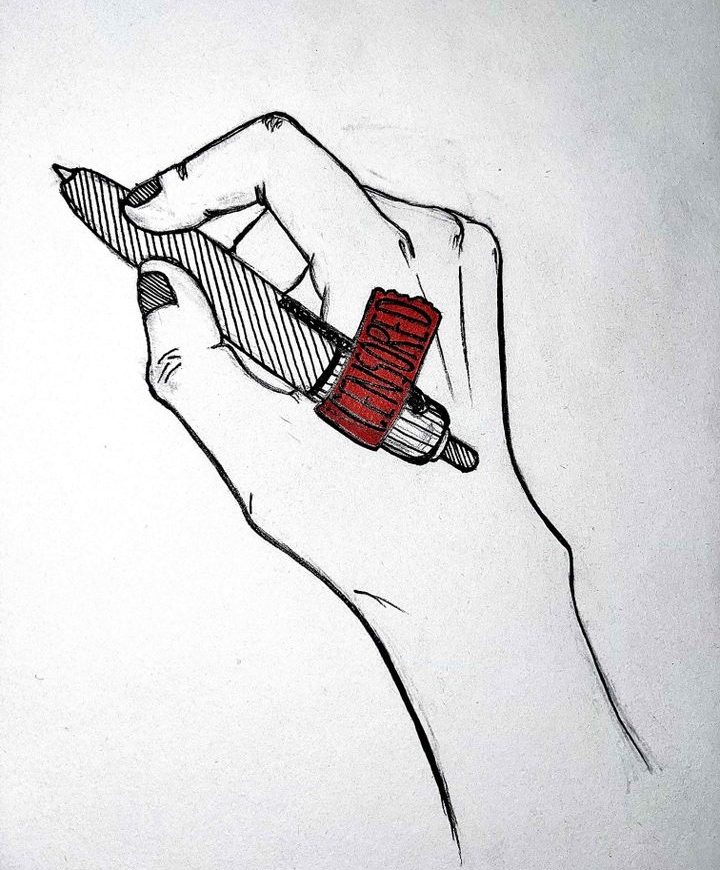[youtube]https://youtu.be/JQQxnqwLHYU[/youtube]
A knife is any cook’s best friend, but it can easily turn into your worst nightmare if you don’t know how to use it. By using these techniques, nothing can go wrong and you can chop up a load of vegetables without a cut on your hand.
Step 1: Choosing your knife
Vegetables and meats can be chopped with a variety of knives. The three most versatile and often used kitchen knives are a Chef’s knife, Santoku knife, and paring knife.
A Chef’s knife is all purpose; you can use it for anything from chopping vegetables like a pro to cutting meat off the bones of chicken. Unlike other knifes such as serrated knife that is only specialized for cutting bread, a chefs knife can do it all.
A Santoku knife is a more sleek and thin version of a chefs knife. The Santoku is a Japanese knife and typically has air pockets at the side of the blade. These pockets help avoid any vegetables from sticking to your knife while cutting. With a thinner blade curved downwards rather than upwards, a Santoku is faster for rough chops and mincing.
And finally, a paring knife is small, but it is a handy kitchen knife used for tiny tasks such as peeling and cutting fruit.
When it comes to chopping fruit and meat, I prefer a Santoku over a Chef’s Knife.
Step 2: Prep
A couple of quick things to note to ensure a safe and comfortable environment while you’re cutting:
- Always place a damp paper towel under your cutting board to prevent it from moving around while you’re cutting.
- A sharp knife is a safe knife; with a blunt or dull knife, you will have to struggle more and apply more pressure to cut anything, and with that comes a injury. You could accidentally end up slipping your fingers under the knife and we know what happens from there. Always run your knife on a honing steel before cutting anything to maintain the knife’s edge, just as shown in the video
- Keep two bowls next to your cutting board. One bowl for trash and the other as a product bowl. if your chopping an onion for example, you could easily remove the peelings and dirt off of your board into your trash bowl and put your chopped onion in your product bowl. As simple as that.
Now that we chose our knife and we are prepared, lets get to cutting.
Step 3: Rough chop, Knife posture, and Rocking motion
To properly hold a knife, pinch the bottom of the blade with your thumb and index finger. With your remaining 3 fingers (middle, ring, pinky) grasp the handle of your knife.
For chopping any thin vegetable such as green onions, carrots, or celery, a rocking motion is typically used. To do a simple rocking motion, grasp the knife in the proper method, keep the tip of the blade down on the cutting board, and hold your knife up so the cutting edge is over the board but the tip of the blade is on the board. Now, slowly rock your knife back and forth by bring the whole knife down on the board, slicing forward, and bringing the knife back to its original position with the tip down and blade up.
Cutting any vegetable with the rocking motion is considered a rough chop because it isn’t any specific chop, such as a mince or julienne.
To avoid cutting your fingers, with your other hand that is not holding the knife, form a bear claw by bending your index, middle, and ring finger inwards and keep your blade side by side with your claw.
Closer details and examples are shown in the video above.
Types of Chopping Techniques
1. Julienne
A julienne is a french term for thin strips. You will typically julienne vegetables for dishes such as stir fry, salads, soups, or any specific and detailed dish.
Typically bell peppers and carrots are cut in julienne form. To julienne a carrot, square off the carrot as shown in the video, cut your carrot into even planks/ rectangles, and from there use your rocking motion to cut your carrot into thin, skinny strips.
For a bell pepper or practically anything else, lay the vegetable down on your cutting board, create a flat surface by peeling off a part of your vegetable so it doesn’t wobble while you cut, and rock your knife back in forth into strips.
Your julienne should resemble or be in the shape of french fries except thinner
2. Mincing
Mincing is often used to cut foods into really small pieces by mincing them.
You would only mince vegetables such as spices, garlic, or ginger because of their strong flavor. By mincing vegetables with strong flavor, you won’t have a big chunk of it coming into your mouth. Who would want a big piece of garlic in their mouth?
Before mincing any vegetable, always start off by dicing or rough chopping it into pieces before going crazy with your knife and mincing.
To mince, keep the tip of your knife down on the board and the blade directly over whatever your cutting, similar to the way you position your knife for rough chopping. Then place the fingers of your other hand directly on top of the knife blade, and rapidly bring the blade down on your vegetable in a half moon motion moving your knife in all directions while chopping.
Keeping your other hand on top of the blade is safe because it prevents your other hand from coming in the way of the blade and makes mincing feel much easier.
3. Dicing
Dicing is cutting anything into small cubes or squares. One easy way of dicing anything is first cutting it into julienne strips, grabbing all the strips together, and rough chopping them side ways to cut into cubes.
Dicing can be used on pretty much any vegetable from tomatoes, potatoes, and most importantly, onion.
Dicing a onion is a bit different than dicing other vegetables. You can’t just julienne an onion and cut it into cubes from there!
To dice an onion, start off by cutting off the tip off the onion but don’t cut off the root. The root of the onion holds it together, if you cut off the root, your onion will start falling apart while you’re cutting.
After cutting off the tip, cut your onion in half from the root side down, peel both pieces of your onion, and wash/rinse with water. Sanitation comes first.
Position your onion half with the root facing west. Turn your onion clockwise by 90 degrees so the root is facing away from you. Now, using the tip of your knife, make several slits down the onion using your bear claw to guide your cuts.
Once you have made your slits, turn your onion counter clockwise back in its original position with the root pointing westward. Slide your knife blade halfway through the onion twice while pinching the top of the onion. Finally, rough chop your onion all together until you have a perfect dice.
When your onion begins to get wobbly, lay it down on its side and rough chop around the root of the onion.
Summary:
Now that you know which knife to use to suite your needs, how to prep before cutting anything, proper knife position, and the 4 most common cutting techniques. I hope you’ll use these techniques to master your knife skills and stay safe the next time your chopping through all your vegetables with speed and precision.

















